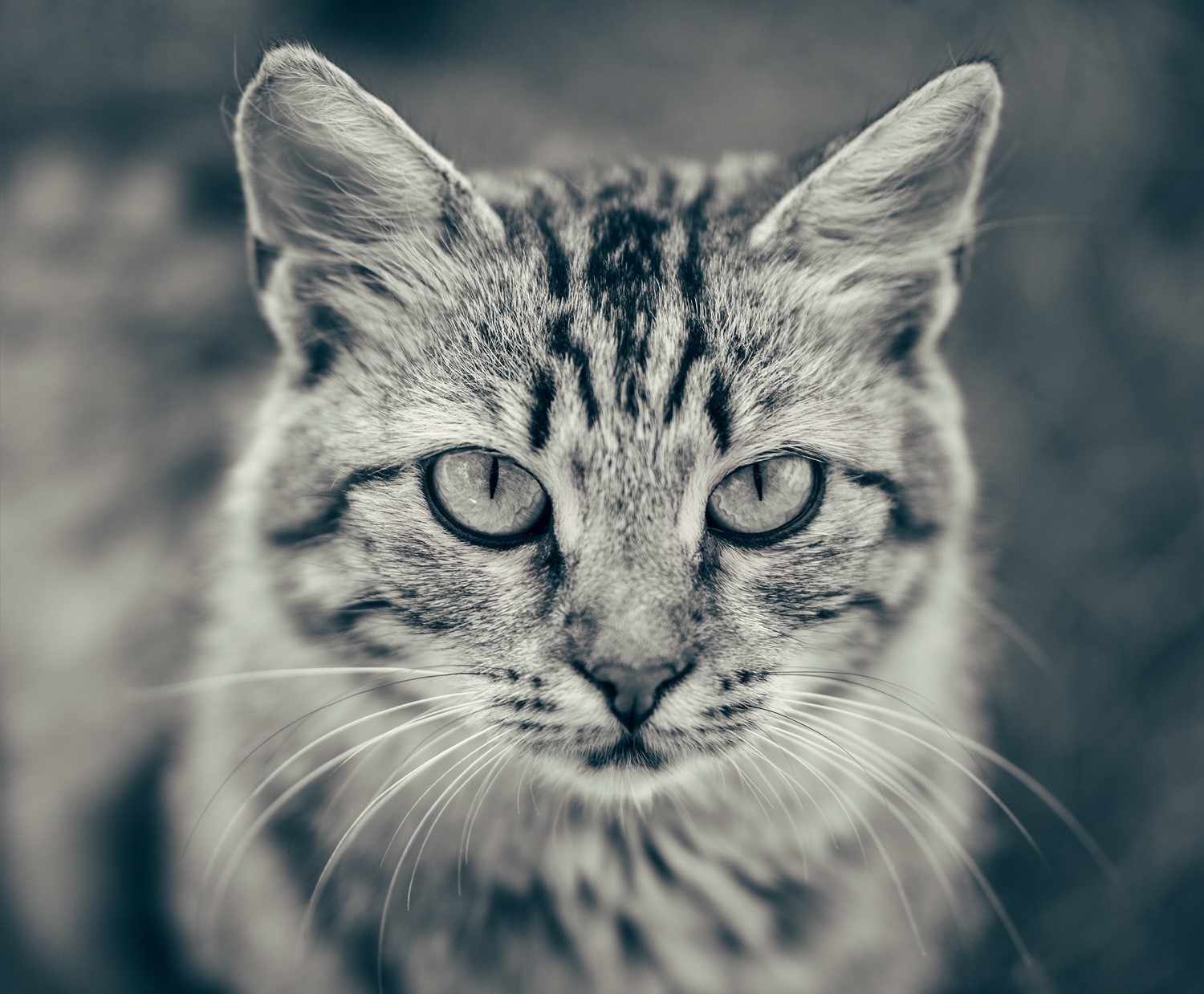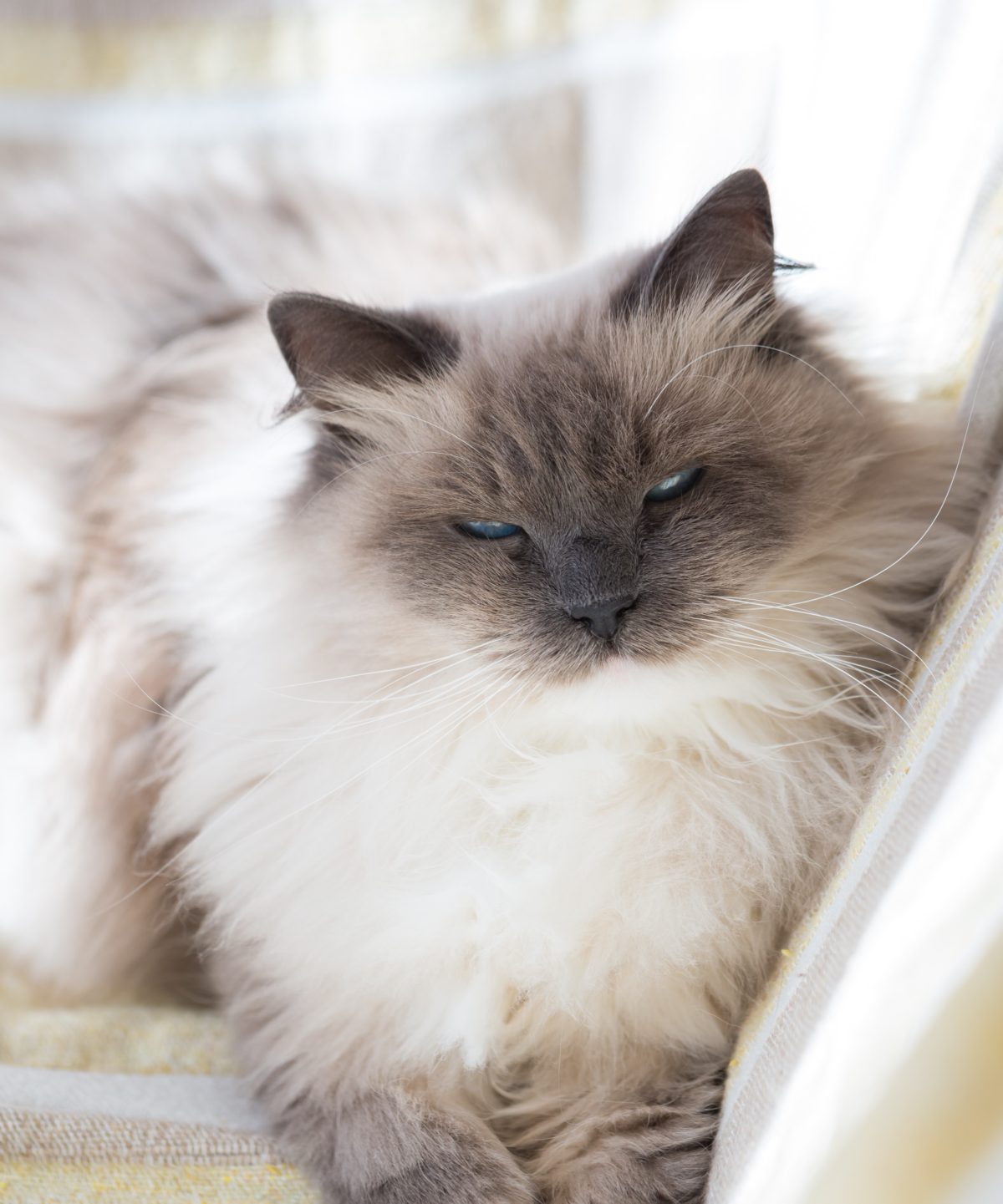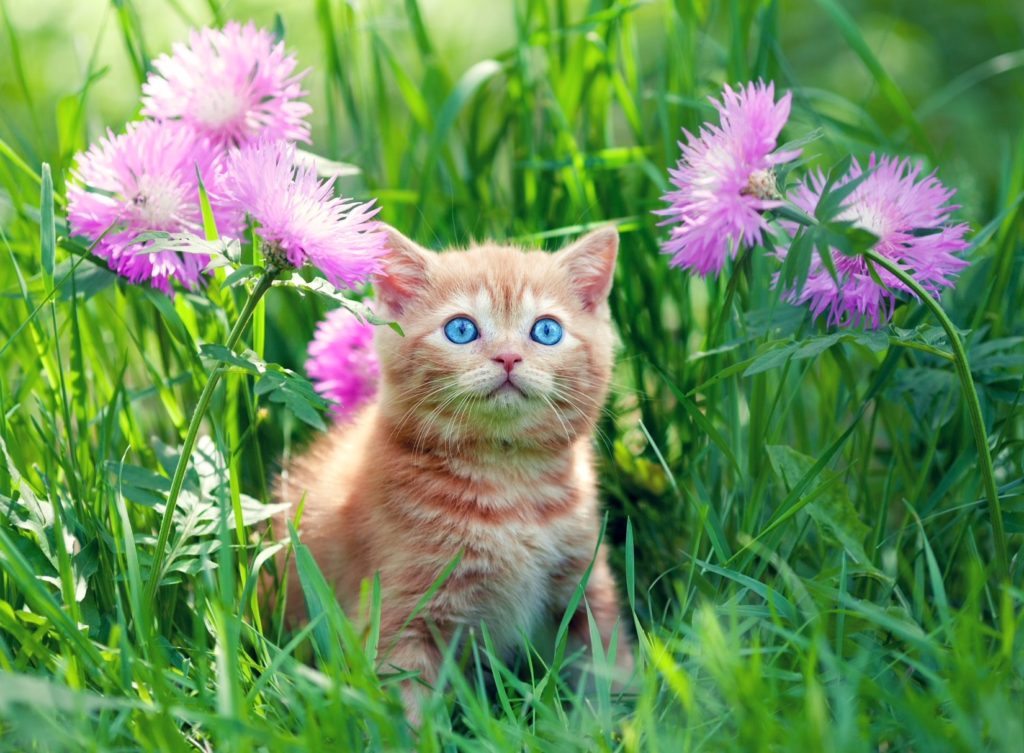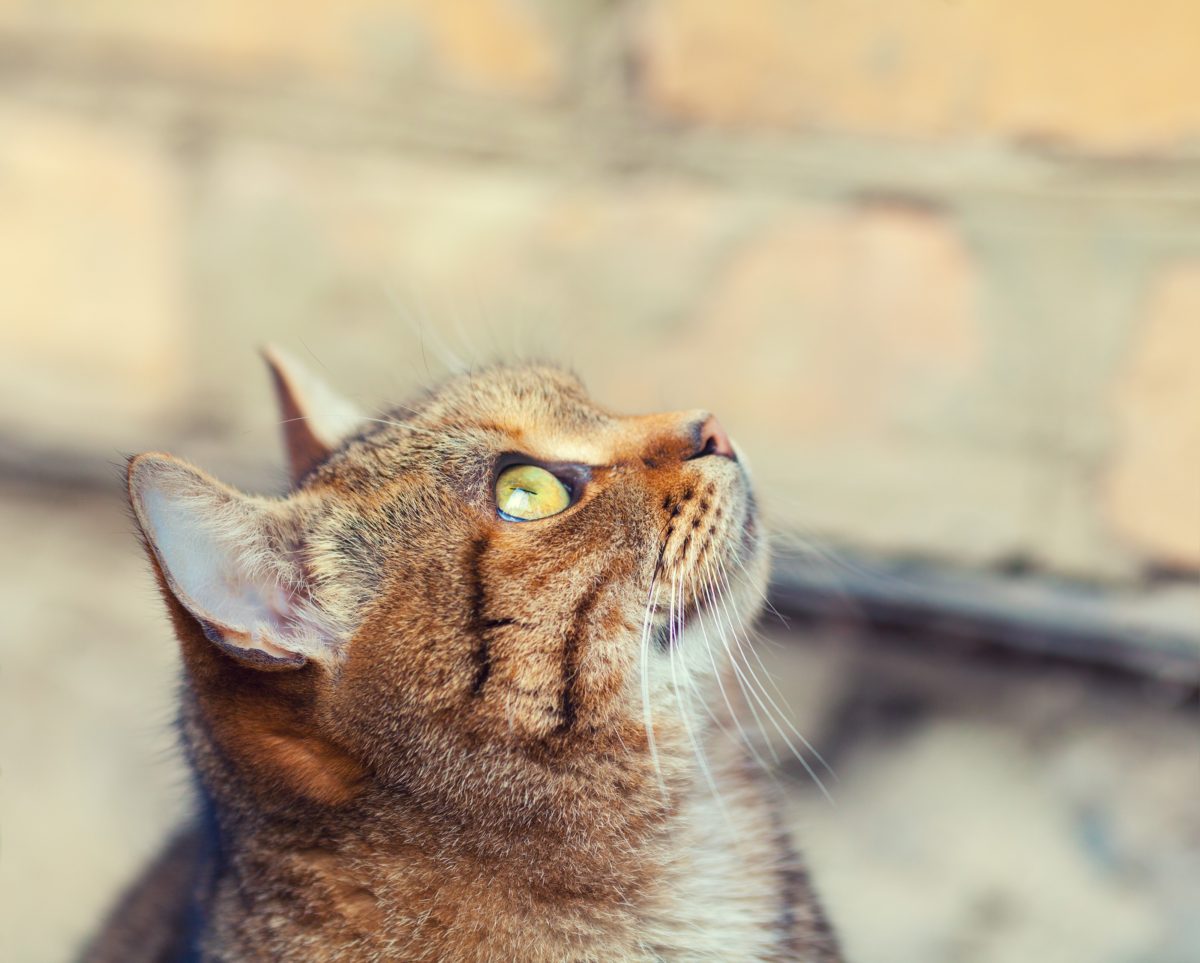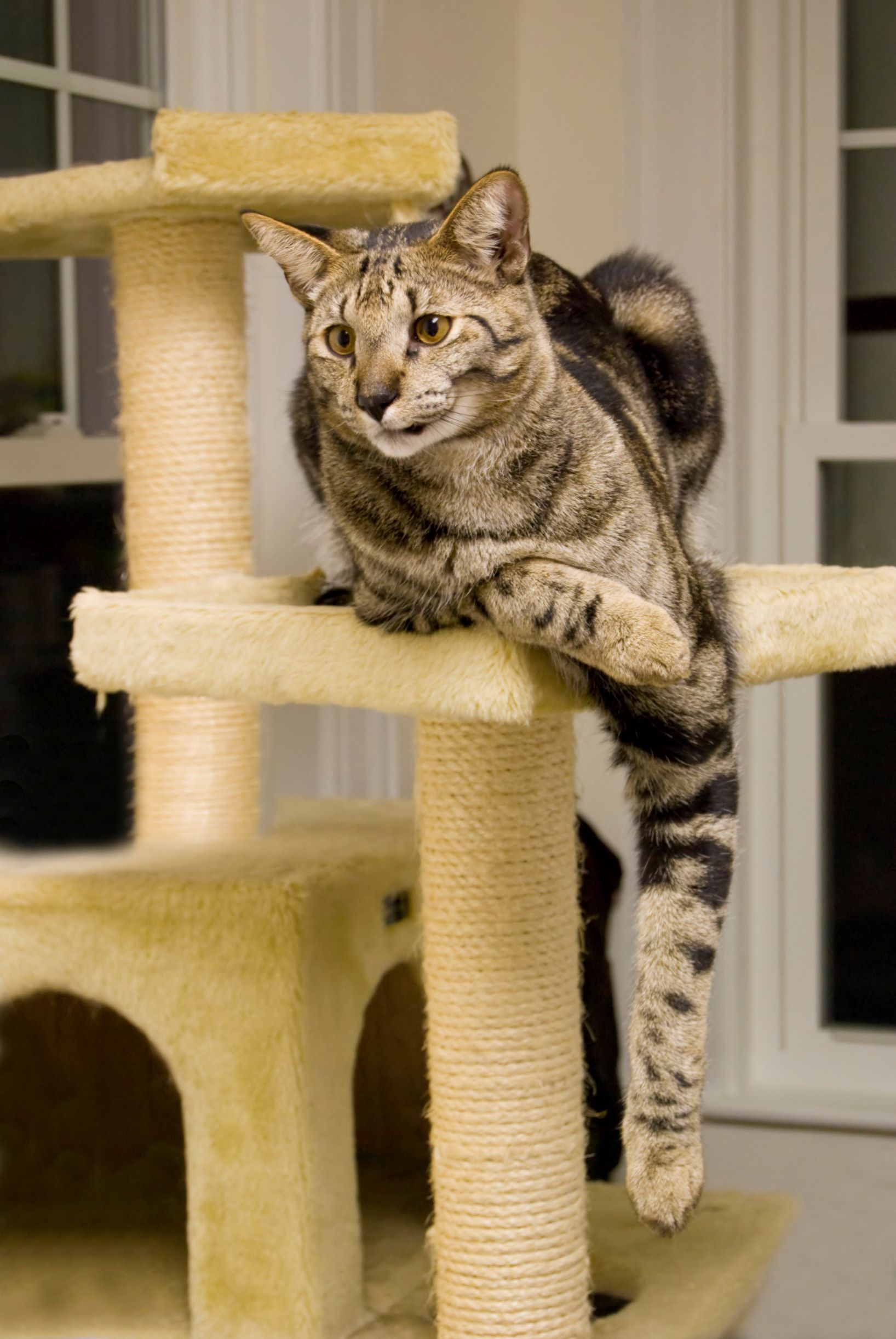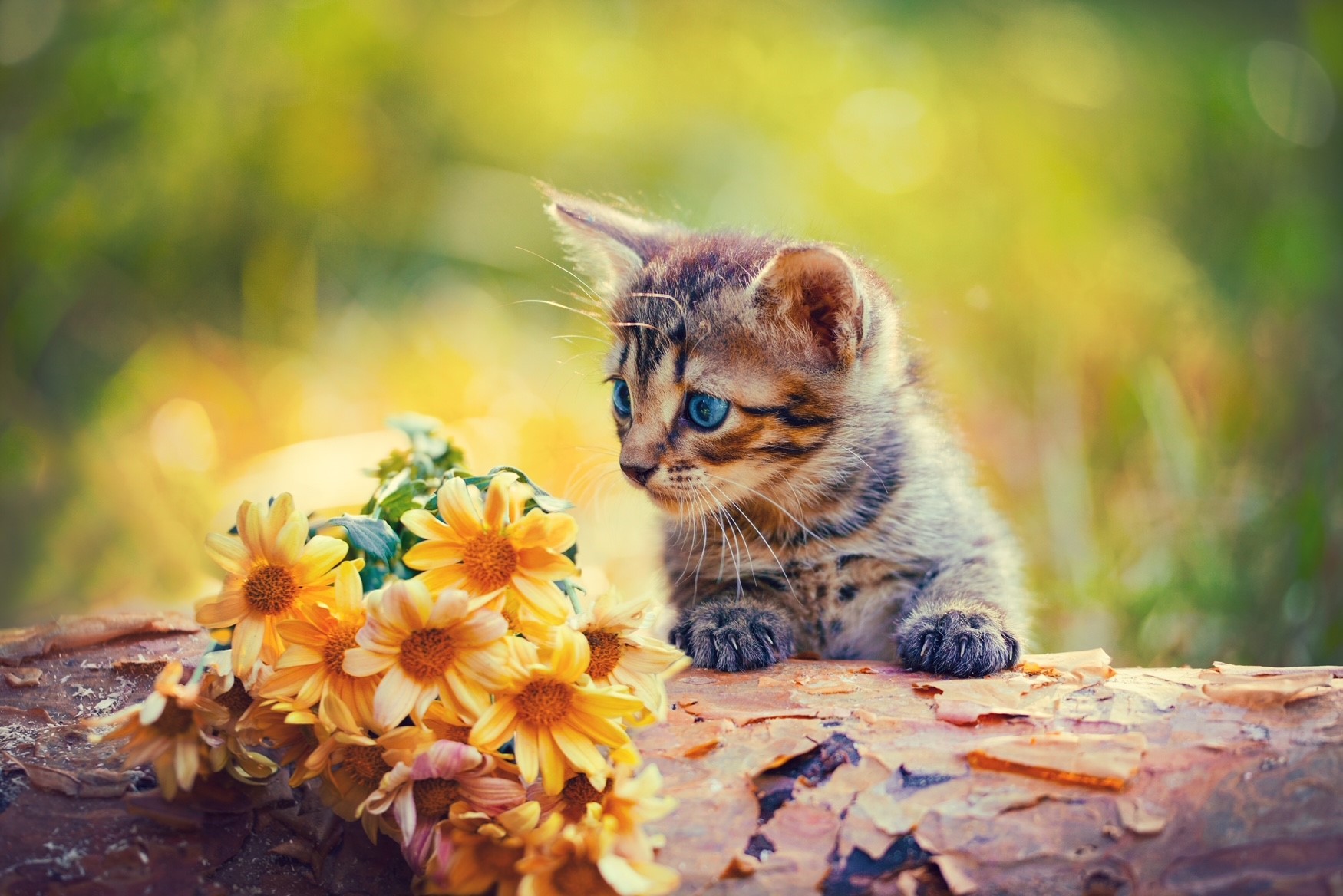
Bach Rescue Remedy for Cats – and other useful Flower remedies for cats
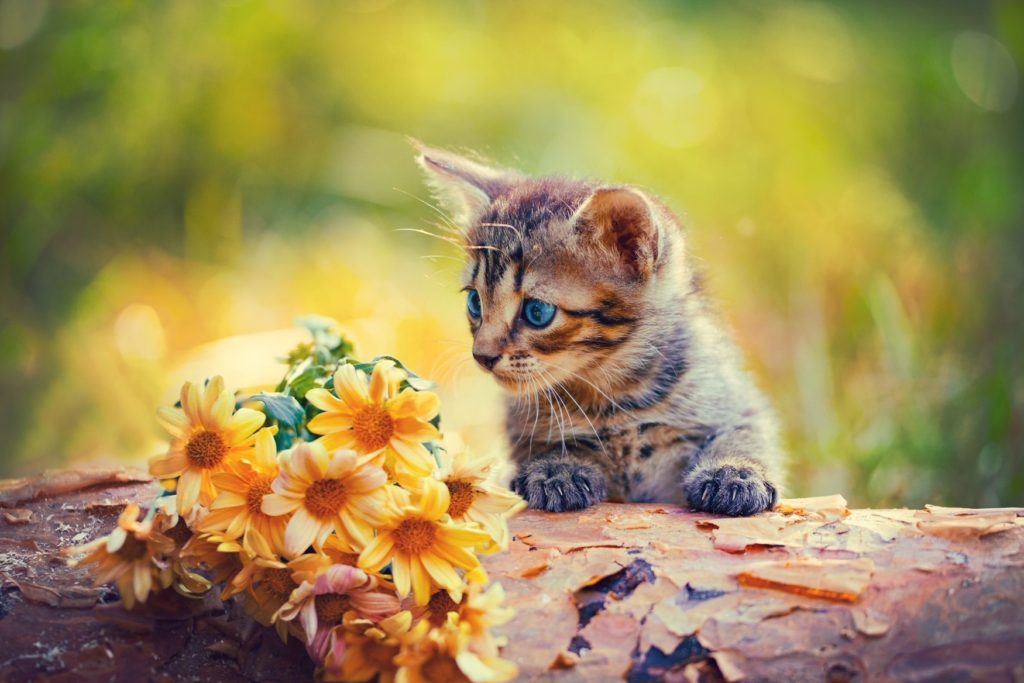 Having found Bach Rescue Remedy very useful for myself and my family in the past to ease nerves and induce calmness, I decided to investigate if it could be useful for our nervous young cat, Boo. I wanted to investigate the natural holistic route for emotional issues initially and see if Rescue Remedy was a safe option.
Having found Bach Rescue Remedy very useful for myself and my family in the past to ease nerves and induce calmness, I decided to investigate if it could be useful for our nervous young cat, Boo. I wanted to investigate the natural holistic route for emotional issues initially and see if Rescue Remedy was a safe option.
Can Rescue Remedy be used for cats?
The short answer is YES. There is a special form of Rescue Remedy especially configured for cats. In fact, it can be used for all pets of all shapes and sizes including fish, birds, dogs and rabbits. Bach Rescue Remedy Pets contains a blend of the same five flower remedies found in the usual Rescue Remedy in an alcohol-free formula thus making it perfect and safe for pets.
What is Bach Rescue Remedy?
Bach Rescue remedy is a flower-based tincture originally discovered and created by Dr Edward Bach in the 1930’s. Rescue Remedy is just one of the many flower remedies discovered by Dr Bach to help people and animals feel better emotionally. Flower remedies are a form of alternative medicine based on the principles of homeopathy. Animals feel emotions, just like humans, be they negative emotions of anger or fear, or positive emotions such as happiness and joy. There are 5 Bach Flower remedies in Rescue Remedy, ready-mixed for emergency use:
Star of Bethlehem – Helps animals that have been though trauma or shock. This trauma can be a new or old trauma, but Star of Bethlehem will help the animal let go of the traumatic event and embrace the positive aspects of life.
Rock Rose – A useful remedy if the animal gets nervous and scared, for example, a trip to the vet or frightened by thunder or fireworks.
Cherry Plum – Will help an animal who has lost the ability to control their own actions, for example, continuous barking or scratching.
Impatiens – Will ease the energy for impatient animals. Those pets who are overly eager for the next meal or to go outside.
Clematis – To help animals to sleep too much and seem oblivious to their surroundings.
Rescue Remedy is the most commonly used remedy for cats, as it is an obvious way of keeping a cat calm in a difficult situation. As with all remedies, it is not a substitute for veterinary care or diagnosis – it is helpful in emergency situation where it is clear the cat is dazed, frightened and distressed and in need of help while you wait for the vet.
What is the difference between Rescue Remedy and Rescue Remedy Pet?
Rescue Remedy and Rescue Remedy Pet both contain the same flower remedies, but the pet product is an alcohol-free formula with glycerin and water. Many pets enjoy the slightly sweetness taste that glycerin has. However, it is also perfectly safe to give your cat the regular rescue remedy too. Given the tiny amounts of alcohol involved as a preservative in the remedies it is extremely unlikely to pose any health risks. There is no known case of any toxic effect from using flower remedies in cats. There are many veterinarians in the USA, and Britain, who favor the use of these remedies and homeopathy.
Why choose Bach Pet Rescue Remedy?
Many cat owners are now exploring alternative solutions to pharmaceutical drugs especially when it comes to negative emotional issues such as separation anxiety and nervousness. Rescue Remedy Pet is one of these alternative options that people are turning too and many owners are indeed seeing positive results. Rescue Remedy has been successful on animals who have experienced an ordeal or trauma or an animal who has fears or dislikes, such as visiting the vet or fear of thunder.
The benefits that Rescue Remedy can give your cat include:
- a feeling of calmness,
- be better equipped to deal with stressful situations,
- to feel less vulnerable,
- bringing back a state of balance,
- and be more confident in facing and adjusting to new situations.
How to give rescue remedy to your cat
Rescue Remedy Pet comes in a bottle with a dropper making it easy to administer. There are various ways to give rescue remedy to your cat:
- The remedy drops can be added to your cat’s drinking water.
- Add to your cat’s food or to a treat.
- Rescue remedy can be rubbed on to your cat’s gums, ears or paws.
You know your cat best therefore choose the easiest method suitable for your cat.
Never put the glass dropper in your cat’s mouth and especially so in a cat that is in a state of anxiety or shock.
If you know that a stressful event for your cat is looming, for example, you know the imminent trip to the vet or travelling in the cat will be upsetting for your cat then Rescue Remedy can be given just before the trip or event. If something unexpected has caused your cat distress, for example, your cat has been in a fight with another cat or a sudden unexpected noise frightened them, then the remedy can be given immediately afterwards.
How much Rescue Remedy should I give my cat?
Guidelines and directions for dosage amounts can be found on the bottle, usually 4 drops are recommended. The dosage is not calculated based on weight but rather on the emotion and situation experienced by your cat. It can be used on kittens or on older cats. Rescue Remedy is not a sedative and it is not possible to overdose on this natural remedy. The remedy can be continued to be given to your cat until you see an improvement. Some cats will show an improvement in their emotional state immediately, others may take a few days. All situations are different, and like us humans, cats vary as individuals too. It may be the case that if no improvement is seen, an alternative flower remedy may be more suited to your cat’s emotional state. If symptoms persist, or you have any concerns regarding your cat’s health it is always advisable to seek advice from your veterinary.
Who was Dr Bach?
Dr Edward Bach was born in 1886 in the UK. He was a doctor, bacteriologist, homeopath, and spiritual writer. It was after his immunology research that he developed an interest in homeopathy and alternative therapies. He believed disease was an end product as a result of fears, stresses and unhappiness. In 1928 he began looking to flowers to discover their healing properties. He worked tirelessly, collecting flowers and creating remedies during the Spring and Summer months whilst focusing on treating patients in the Winter. By 1932, he had discovered his first 12 flower remedies and by 1934 he had found all of his 38 flower essence remedies.
Dr Bach believed that all negative emotional problems could be removed by these specially prepared flower remedies. This safe and natural healing method would remove the negative emotions thus restoring a balanced, calm, happy body and mind. The body is then able to heal itself once the negativity had been removed. Dr Bach published many articles and presented numerous lectures about his remedies. Dr Bach passed away in 1936 leaving generations to come with a classification of medicines that is now recognised, and used, worldwide.
Other Flower Remedies
Dr Bach discovered a total of 38 Flower Remedies. Each remedy, or combination of remedies, can help heal different emotional issues. Animals, just like us humans, can feel scared, anger, grief, happiness and joy. Although initially it may be a little overwhelming to decide which remedy is best suited to treat your cat’s behavior, this will get easier. As you spend more time with your cat, getting to understand each other, you will know better than anyone what range of emotion they are likely to be feeling at that point in time. We have a great article about cat communication, which explores the various pointers and clues that will help you understand what your cat is trying to tell you. Cat language is a combination of tail positions, facial expression, vocal and scenting messages.
It is important to realize that behavioral problems in cats may be down to pain, or a medical disorder. Always check with your vet first to make sure there is nothing medically wrong with your cat. Flower remedies can help with emotional and mental stress associated with pain and illness but do not treat the illness or pain itself.
The 38 flower remedies discovered by Dr Bach are as follows, with particular focus and insight given here to the remedies from a feline perspective. Very often, the best results is obtained when remedies are combines therefore addressing every angle of an emotional issue.
1. Agrimony
General indication: worry, sensitive to disharmony, used to help those who hide their trouble behind a cheerful front
Goal of remedy: To regain inner peace and harmony
Cats of this nature will be hiding their torture and stress and will often turn conflict or painful situations into a game. But key signs to look out for are:
- cat is restless when asleep,
- seem agitated but yet playful,
- despite an obvious injury or illness will still purr or try to play,
- or cat appears happy but other signs such as spraying in the house, over grooming etc denote otherwise.
2. Aspen
General indication: Vagueness, fears with no reasoning.
Goal of remedy: To restore confidence and courage
Cats tend to be aware of their fears therefore the unclear fears of Aspen is not likely to be exhibited in cats. It can be helpful in old cats in the last phase of their life. Behaviour to look out for includes:
- anxiety in a familiar environment,
- sudden panic for no obvious reason.
3. Beech
General indication: Useful for those who lack tolerance and are critical of others.
Goal of remedy: Encourages tolerance and compassion.
A useful use of Beech in cats is to help those cats which have become distrusting of people as a result of past experiences. Sometimes it can take more than love and care to help a cat trust humans again. This remedy can aid this by helping them to learn to trust again. Things to look out for are:
- a cat showing intolerance of new food, people, living arrangements,
- displays irritability if usual habits are disturbed.
4. Centaury
General indication: Impatience and frustration, living life in a rush and wish everything done hastily without delay including recovery from an illness.
Goal of remedy: To restore confidence and encourage assertiveness.
Cats in need of this remedy can be shy and retiring, and very soft. Key signs to look out for are:
- cats who have suffered cruelty or abuse,
- tend to fall prey to be bullied by other cats,
- insecure and never take the initiative.
5. Cerato
General indication: To strengthen those with self dis-trust and a lack of self-belief.
Goal of remedy: To bring strength to their personality.
Cerato cats constantly seek confirmation that their actions. It is especially useful in cases where a kitten has been taken from its mother too soon. Key signs to look out for are:
- Your cat will be unsure before playing with a toy and be looking for confirmation that it is okay to go ahead.
6.Cherry Plum
General indication: Self-mutilation, fear of losing mental balance.
Goal of remedy: To remove fear and to restore calm.
Cherry plum is a great remedy for fear and will restore self-control. Although cats aren’t subject to the same depth as human mental torture, the intensity of their own emotions can frighten them. This is also the main remedy for cats that bite their own fur. Key signs to look out for are:
- panic and desperation to escape,
- uncontrolled attacks on other felines,
- self-injury,
- hissing and scratching hysterically.
7. Chestnut Bud
General indication: Repeated mistakes, inability to learn from errors or from others.
Goal of remedy: Increased learning ability.
A useful remedy to increase focus and concentration in young cats that are impulsive and tend to repeat mistakes over and over. Signs to look out for are:
- despite gentle and repetitive training, the cat will struggle with simple rules of littering, scratching etc,
- repeated behaviour despite its negative effects, i.e. no learning curve.
8. Chicory
General indication: Possessive and manipulative, in need of attention.
Goal of remedy: To bring out positive aspects of needing love, letting go and emotional independence.
Cats of this type can become very clever at manipulating owners for attention, either by reverting to kitten type behaviour or actions to distract such as knocking things off surfaces, sipping furniture and so forth. Key signs to look out for are:
- cat may pine for you when you are not here,
- be constantly under their owners’ feet but completely the opposite with strangers,
- compete for your attention,
- be very protective of kittens of their human family.
9. Clematis
General indication: Dreamy and detachment from the present.
Goal of remedy: To restore focus and become grounded in the presence of today.
Clematis cats sleep more and seem to live in their own little world. Signs to look out for are:
- mishaps and accidents due to lack of attention,
- longer and more frequent sleeping than the average cat,
- and a cat that doesn’t seem to respond to name calling, sound of supper being prepared – the usual positive incentives.
10. Crab Apple
General indication: For feelings of being ashamed or disgust.
Goal of remedy: Acceptance and cleansing.
Although they general indications don’t seem applicable to cats, crab apple can help with physical skin conditions. It can help cats with itchy skin, or minor wounds and grazes. It is one of the remedies within the rescue cream that is available, and it can help on these troublesome spots. Key signs to look out for are:
- cat seems depressed and low when dealing with a skin condition or parasitic infection,
- compulsive grooming to the point of being so excessive that they cause damage to themselves,
- can also help cats who are overly fussy.
11. Elm
General indication: Overwhelm and temporary loss of confidence due to too much responsibility.
Goal of remedy: Ability to deal with additional pressures and chaos calmly.
In an Elm state, your cat, who is usually confident, will appear overwhelmed and gloomy. Cats in a chaotic environment such as rescue centres or catteries can benefit from Elm. Key signs to look out for are:
- Capable cats losing confidence after an illness,
- Cats struggling with additional responsibilities, for example, a nursing cat dealing with noisy house guests, a new cat in the household, giving birth to a large litter.
12. Gentian
General indication: After a setback, discouragement and despondency set in.
Goal of remedy: To restore drive and give encouragement to overcome this mild depressive state.
If something has gone wrong in your cat’s life and they respond by becoming despondent, seem slow to recover and have lost their vitality, then gentian can be the remedy to help. Key signs to look out for are:
- withdrawal or despondency in your cat after a setback,
- or giving up easily after becoming ill.
13. Gorse
General indication: Having reached the point of giving up, hopelessness and despair.
Goal of remedy: To strengthen hope and faith, and the will to continue.
Gorse will help cats in a deep gloom, depressive state. A cat can shut down after a major event such as loss of their owner, a traumatic experience or in old age. Gorse is a key remedy and can give light and hope to recovery. Key signs to look out for cats who have reached this phase are:
- cat doesn’t seem to care if he survives or not,
- a depressive state of gloom,
- and making no attempt to recover or enjoy anything in life.
14. Heather
General indication: Always seeking companionship and attention, do not want to be alone.
Goal of remedy: To restore emotional independence.
Heather cats will show their needs by being persistent in gaining attention, be it good or bad behaviour. Things to look out for are:
- a usually quiet cat becomes vocal,
- will follow absolutely anyone and demand attention,
- a seeking of any attention from any source.
15. Holly
General indication: Jealousy, hatred – a negative vibe about others.
Goal of remedy: Serenity and tolerance.
Jealousy and upset can by triggered in cats by a variety of reasons such as a new baby or a new kitten into the family. The Holly essence can help with these transitional times. It’s particularly useful in reducing hostility between cats. Key signs to look out for are:
- continuous aggression or attacks,
- jealous attacks on potential rivals,
- aggressive body language towards strangers but with fear ruled out.
16. Honeysuckle
General indication: Reliving past happiness, nostalgia, or wallowing in sad recollections or regrets.
Goal of remedy: To restore balance, calm and composure.
Honeysuckle can help cats that have lost the spark of life after losing a close companion, be they cat or human. It is also an useful remedy to help with separation anxiety. Signs to look for in your cat include:
- a liking for past owners or homes,
- and will keep returning to these,
- failing to thrive in new situations,
- dreaminess and pining.
17. Hornbeam
General indication: Tiredness at the mere thought of task ahead, loss of concentration.
Goal of remedy: Restore focus and mental energy.
This remedy can help cats maintain vital energy when needed most, to fight an illness. As with all remedies, it won’t cure the illness but the emotional strength to beat it. Key signs to look out for are:
- tiredness and lethargy in a well-rested cat,
- reluctance to set out on the day’s activities such as feeding, grooming, hunting,
- a cat that will play and interact well but after encouragement and reluctance to start.
18. Impatiens
General indication: Impatience and frustration, living life in a rush and wish everything done hastily without delay including recovery from an illness.
Goal of remedy: To bring calmness and patience, restoring serenity.
Cats in need of this remedy will be rushing from one thing to the next and will not like a delay to their delay routine. Key signs to look out for are:
- short sharp bursts of irritability,
- moving quickly from one thing to the next,
- not keen to stay with kittens or calmer, serene creatures,
- or a cat that has little mishaps often.
19. Larch
General indication: Lack of self confidence and avoidance of challenges.
Goal of remedy: Self-belief and emotional security.
Larch can be useful in cats losing self-confidence such as in old age, an unconfident young kitten, or if a cat has a difficult task ahead. Things to look for are:
- cats reluctant to try new foods, new environments, etc,
- cats that avoid dominant cats or positive encounters with children or cat-loving people,
- a cat who will follow once another has done the first move always.
20. Mimulus
General indication: For fears and anxiety about something specific.
Goal of remedy: To restore confidence and calm.
Cats in need of Mimulus will tend to have a lack of confidence, shy and timid and will show obvious signs of fear to whatever causes them to be afraid. Things to look for are:
- unwillingness to approach strangers, children, etc,
- jump when startled by a noise,
- the cat attempting to escape from a certain situation, for example, at the vet’s or getting into a travel carrier
- aggression when in fear such as biting.
21. Mustard
General indication: Unhappiness and gloominess for no apparent reason.
Goal of remedy: To restore joy and optimism.
Cats usually become depressed due to a clear reason, be it old age, loss of a friend, stressful environment and so forth. Signs to look for in your cat include:
- depressed body language,
- sudden depression with no obvious reason.
22. Oak
General indication: Useful for those who have continued beyond their limits, a despondency from weakening resistance
Goal of remedy: Firstly, to restore willpower and energy reserves, secondly to teach restating and ability to stop when it is needed.
Just like humans, cats can suffer loss of energy and vitality after a long illness or lack of care. Oak can be useful to support recovery after treatment or an operation especially as cats often seem to lose their vitality after illness or trauma. Key signs to look out for are:
- a sudden illness or health issue in an otherwise healthy cat,
- but will try to continue as normal despite this.
23. Olive
General indication: Mental, physical or spiritual exhaustion after great effort.
Goal of remedy: To restore energy and vitality
Olive can restore energy after a time of stress or illness which has left a cat totally exhausted. Can be a helpful remedy for rescue cats, older cats or a cat recovering from an illness. Key signs to look out for are:
- exhaustion after a period of ill health,
- extreme tiredness after activity.
24. Pine
General indication: Guilt and self-blame.
Goal of remedy: Acceptance and freedom.
Cats, as far as we know, do not express guilt or remorse. It is easy to mis read a guilty expression for a fearful one, fear for about to be punished rather than looking guilty for doing something naughty or mischievous. Pine is therefore more suited to people than to cats.
25. Red Chestnut
General indication: Fear for others.
Goal of remedy: To restore calm and clear thinking, and emotional independence.
It must be noted here that a mother cat, like any other animal, will be very protective of her young, and she will do whatever is needed to keep them safe. Flower remedies will not cure what is a natural instinct. But it can be a useful remedy is this natural instinct is over exaggerated. Red chestnut can also be very useful if a cat, who is very emotionally dependant on its owner, becomes very anxious when its owner is away on holiday for example. Things to look for are:
- a cat that is anxious for the return of beloved owners,
- a mother cat continually moving kittens to a safer place,
- or a cat who becomes distressed when kitten, or their owner, is out of sight.
26. Rock Rose
General indication: Acute terror or frozen with fear.
Goal of remedy: To restore calmness and courage.
Cats can feel fear, just like people. Rock rose can help with acute fear and anxiety, which is often seen in cats who have been badly looked after or beaten up. This is a good remedy if needing to keep a cat calm after an accident whilst awaiting veterinary care. Key signs to look out for are:
- frozen with fear,
- panic,
- attempting to escape,
- or is escape doesn’t seem an option, then a desperate attempt to attack.
27. Rock Water
General indication: Fixed habits, high targets and self-denial.
Goal of remedy: To promote greater emotional and mental flexibility.
Cats in need of Rock Water will appear to carry on routine, such as morning stroll, even when ill or tired. It is a useful remedy when needing to teach new things such as a cat flap, it will help soften changes to set routines. Things to look for are:
- will truly dislike a change to daily routine,
- and regular habits whatever the circumstances.
28. Scleranthus
General indication: Difficulty in making decisions, even simple choices.
Goal of remedy: To encourage decisiveness and focus.
Cats aren’t generally indecisive, but other key factors to look for include:
- travel sickness,
- lack of physical balance,
- mood swings especially in cats who have had false pregnancies
- and generally, a cat who seem unsettled and will sway from one thing to the next.
29. Star of Bethlehem
General indication: Shock, grief, trauma
Goal of remedy: Moving on from hurt and trauma.
A key remedy for cats and used in many centres to help with traumatised cats. Star of Bethlehem is very useful to deal with past traumas, which may have been years ago. Key signs to look out for are:
- cats that find kindness as a strange concept,
- deaths of a human or feline family member,
- past or present trauma,
- behavioural changes following a shock or trauma.
30. Sweet Chestnut
General indication: Utter despair and anguish.
Goal of remedy: Hope and endurance.
Sweet chestnut can help cats who are very sad when ill, stressed or neglected. This remedy often works well with Star of Bethlehem. Signs to look for in your cat include:
- a cat who is very ill and suffering much anguish,
- giving up after the death of a close companion,
- cats with a terminal illness.
31. Vervain
General indication: Overly enthusiastic leading to burnout.
Goal of remedy: To restore balance, calm and composure.
Cats in need of this remedy will be eager to start exploring each day, be hyperactive and displays high levels of excitement and energy. Signs to look for in your cat include:
- over excitement and over enthusiasm,
- fiery anger particularly at injustice,
- get frustrated quickly when unwell,
- high levels of activity and general excitement.
32. Vine
General indication: Dominance over others.
Goal of remedy: To mellow extreme dominance or over-assertiveness.
A Vine cat is a truly dominant cat. While being territorial is a cat’s natural instinct this remedy will help ease physical constant dominance and aid harmony in your cat. Things to look for are:
- physically threatening other cats,
- bullying other cats,
- insisting on being first to have everything such as food, attention.
33. Walnut
General indication: Useful for those who are being led astray, and in times of change.
Goal of remedy: Stability and protection.
Walnut can offer a cat courage during times of change such as moving home, accepting a new pet into the household. It can also be useful for cats where a cat’s daily living is a stressful environment – an unhappy home or a cattery. Things to look out for are:
- cats struggling to deal with life changing events such as old age, disability,
- cats that need help to settle after a major change at home,
- a cat being dominated by another.
34. Water Violet
General indication: Self-reliance and a preference for being alone.
Goal of remedy: To re-create social harmony
Cats generally can be thought of as aloof and preferring to be alone but if the cat is avoiding eye contact and struggling to tolerate any social groups then Water Violet can help. Key signs to look out for are:
- not wanting any interaction, keeping themselves totally to themselves,
- aloof and rejecting familiar situations but display no fear as a cause.
35. White Chestnut
General indication: Constant worrying, repetitive thoughts and a lack of mental tranquillity.
Goal of remedy: Inner peace
Cats need mental tranquillity just the same as people. Even though they may not consciously process thoughts like we do, they can still suffer from stressful states of mind. Things to look for include:
- cat unable to settle, agitated and restless,
- suffers with insomnia,
- and when they do fall asleep, it can be restless.
36. Wild Oat
General indication: Lack of direction and purpose
Goal of remedy: To move forward and to energise
This remedy state can be difficult to identify in cats as they don’t struggle in finding what motivates them, or what direction to take life! But it can be useful in cats where there is a lack of progress, a fall in energy levels or difficulty in settling. For example, if an outside cat had to become a full-time indoor cat the remedy could help with the frustration and help in discovering new activities and purpose to life. Key signs to look out for are:
- unable to settle,
- a lost and drifting behaviour.
37. Wild Rose
General indication: Sense of giving up the struggle.
Goal of remedy: Determination and courage
Cats that have been become ill, or one that is dying slowly, or subjected to stress for a long period of time, can begin to ‘shut down’ emotionally. Wild Rose can help them get over the emotion of reluctance to return to normal activities. Key signs to look out for are:
- loss of interest in life in general,
- indifference and apathy.
38. Willow
General indication: Resentment and self-pity.
Goal of remedy: To encourage a more positive, generous outlook and let go of negative feelings.
Willow helps cats with resentment towards humans in general, or a specific person or with other cats in the same household. Key signs to look out for are:
- negativity and hostile responses to friendly offerings,
- reactions can range from complete silences to constant whinny vocal sounds.
The entire collection of Bach’s flower remedies is available to be purchased, see also two particularly interesting and useful books listed below.
Other alternative healing options for cats
Natural medicine and alternative healing and is a growing trend in treating pets. There are so many options available – crystals healing, homeopathy, kinesiology and reiki to name a few. Each unique in their approach but all with the same goal of treating your cat naturally and holistically. Check out the following articles which may be of interest to you:
- Reiki for cats – Everything you need to know
- Can you give Arnica to Cats – and other Homeopathic remedies for cats
- The Energetic power of cats and their spiritual meaning
- Does the full moon affect my cat?
Further reading
If you would like to discover more about this fascinating topic, there are several books available which delve deeper into the interesting world of flower essences. My personal favourites include:
The Encyclopaedia of Back Flower Therapies – this is a comprehensive, valuable reference book with beautiful illustrations and detailed information. The book includes diagnostic guidelines, body maps and does include advice on using Bach Flower remedies to treat animals.
Bach Flower Remedies for Cats – For a specific book on treating cats with flower remedies then this book is perfect.
IMPORTANT
If you have any concerns regarding the health or wellbeing of your cat, please do not hesitate to seek advice from your veterinary.
Other articles you may find of interest:
Natural and alternative healing for cats – an introductory guide
The energetic power of cats and their spiritual meaning
Can you give arnica to cats and other homeopathic remedies for cats
